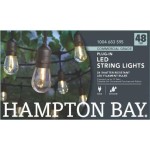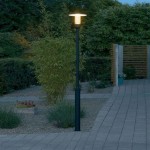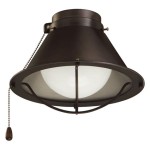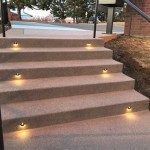Photoelectric Sensor for Outdoor Lights
Outdoor lights play a crucial role in enhancing security, safety, and aesthetics around homes and businesses. However, keeping these lights switched on constantly can lead to unnecessary energy consumption and increased electricity bills. Photoelectric sensors offer a practical and efficient solution by automatically controlling outdoor lighting based on ambient light levels.
Photoelectric sensors, also known as light sensors or photocells, detect changes in light intensity and trigger an electrical signal to control connected devices. In the context of outdoor lighting, these sensors are typically used to automatically switch lights on at dusk and off at dawn. They work by measuring the amount of ambient light and comparing it to a pre-set threshold. When the light level falls below the threshold, the sensor activates the connected lights, and when the light level rises above the threshold, the lights are switched off.
How Photoelectric Sensors Work
Photoelectric sensors for outdoor lights operate on the principle of photoconductivity. They comprise a light-sensitive element, typically made of cadmium sulfide (CdS) or a similar material. When exposed to light, the resistance of this element decreases, allowing current to flow through it. The amount of current flow is directly proportional to the light intensity.
Within the sensor, the current flowing through the light-sensitive element is compared to a predetermined threshold. If the light level falls below the threshold, the sensor activates the connected lights. Conversely, if the light level rises above the threshold, the sensor deactivates the lights. This process ensures that the lights are only on when needed, resulting in energy savings and extended bulb life.
Types of Photoelectric Sensors
Photoelectric sensors used for outdoor lighting come in various types and configurations. Some common types include:
- Passive Infrared (PIR) Sensors: These sensors detect changes in infrared radiation emitted by moving objects. When a person or animal passes within their range, they trigger the lights. PIR sensors can be used in conjunction with photoelectric sensors to provide additional security features and limit light activation to movement within the designated area.
- Microwave Sensors: These sensors emit microwave signals that are reflected back when an object enters their field of view. They are effective at detecting movement even in darkness or through barriers. Microwave sensors can be used in conjunction with photoelectric sensors to provide broader coverage and increased sensitivity.
- Ultrasonic Sensors: These sensors emit sound waves that bounce back when they encounter an object. By measuring the time it takes for the waves to return, they can detect movement. Ultrasonic sensors are often used in conjunction with photoelectric sensors to provide further protection against false triggering caused by wind or other environmental factors.
Benefits of Photoelectric Sensors for Outdoor Lights
Photoelectric sensors offer numerous advantages for outdoor lighting applications:
- Energy Savings: By automatically switching lights on only when necessary, photoelectric sensors significantly reduce energy consumption compared to traditional manual controls. This translates to lower electricity bills and a reduced environmental footprint.
- Extended Bulb Life: Consistent light activation and deactivation cycles can shorten the lifespan of light bulbs. Photoelectric sensors minimize the number of on/off cycles, extending the life of bulbs and reducing replacement costs.
- Enhanced Security: By illuminating areas automatically when darkness falls, photoelectric sensors provide a deterrent against criminals and intruders. This can help to protect property and improve overall safety.
- Increased Convenience: Photoelectric sensors eliminate the need to manually turn lights on and off, providing a convenient and hassle-free experience.
- Improved Aesthetics: By preventing lights from staying on unnecessarily during daylight hours, photoelectric sensors contribute to a more aesthetically pleasing environment.
Photoelectric sensors are an essential technology for modern outdoor lighting applications. Their ability to automatically control lights based on ambient light levels offers numerous benefits, including energy savings, extended bulb life, enhanced security, increased convenience, and improved aesthetics. By incorporating photoelectric sensors into outdoor lighting systems, homeowners and businesses can enjoy optimal lighting while minimizing energy consumption and maximizing efficiency.

2pack Dusk To Dawn Day Night Sensor Photoelectric Switch Photo Cell Ip65 Waterproof Photocell For Outdoor Light Com

2 Pack Photocell Sensor Switch Ul Listed Outdoor Conduit Lighting Control With Swivel Mount Ip65 Dusk To Dawn Hardwired Photoelectric For Led Post Light Wall Shoebox Porch Lights Com

Automatic Light Sensor Switch

2pack Dusk To Dawn Day Night Sensor Photoelectric Switch Photo Cell Ip65 Waterproof Photocell For Outdoor Light Com

Ston Twist Lock Photocell For Outdoor Lights Sensor Photo Control Light Dusk To Dawn Com

Photo Cell Outdoor Sensor 1 85 Inch High 28 Diameter White Pcout Leviton

Solus 6 Ft Broe Outdoor Lamp Post With Dusk To Dawn Photo Sensor Fits 3 In Top Fixtures Sm6 320ncastv Bz The Home Depot

Lipu Photo Sensor For Outdoor Lighting System Switch Photocell China Made In Com

Herwey Photoelectric Sensor Switch Dusk To Dawn Photo Control 120v Led Light Automatic On Off For Outdoor Fixtures Ca
Related Posts







